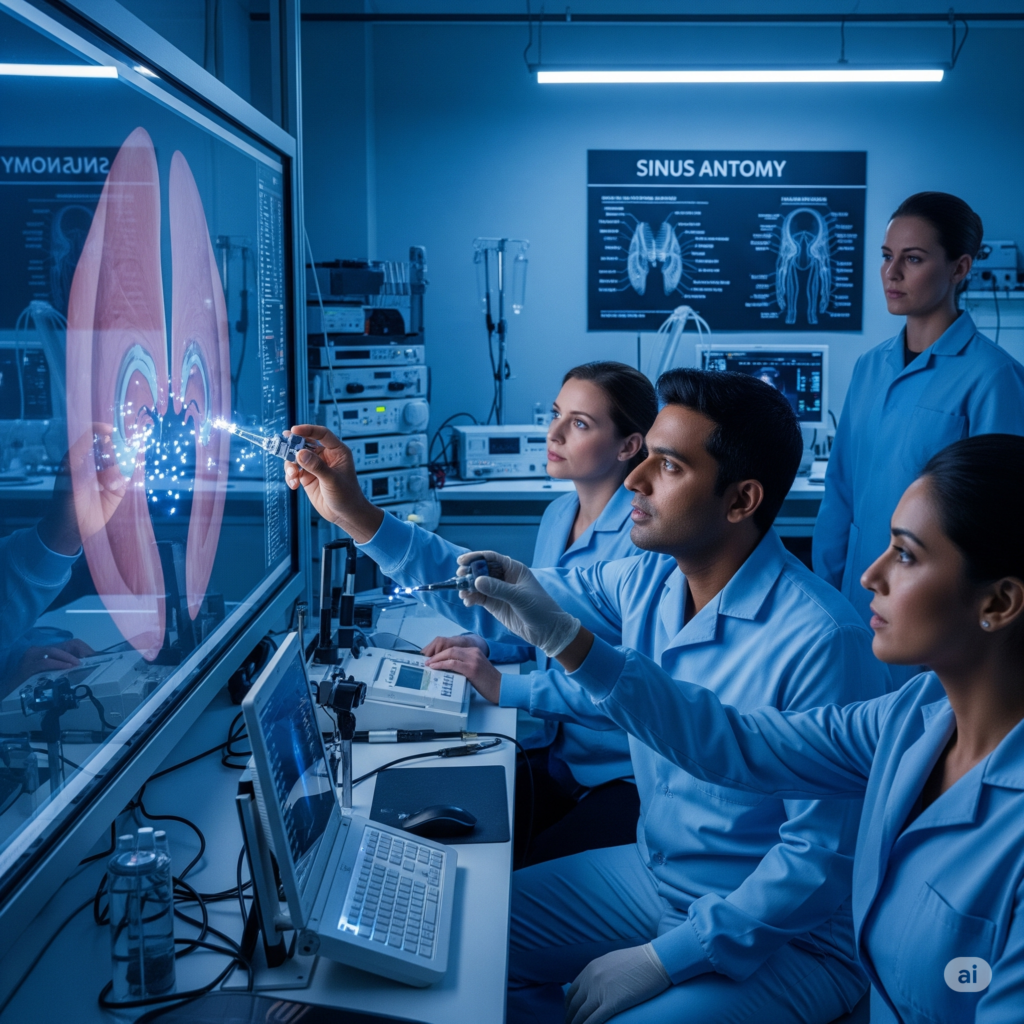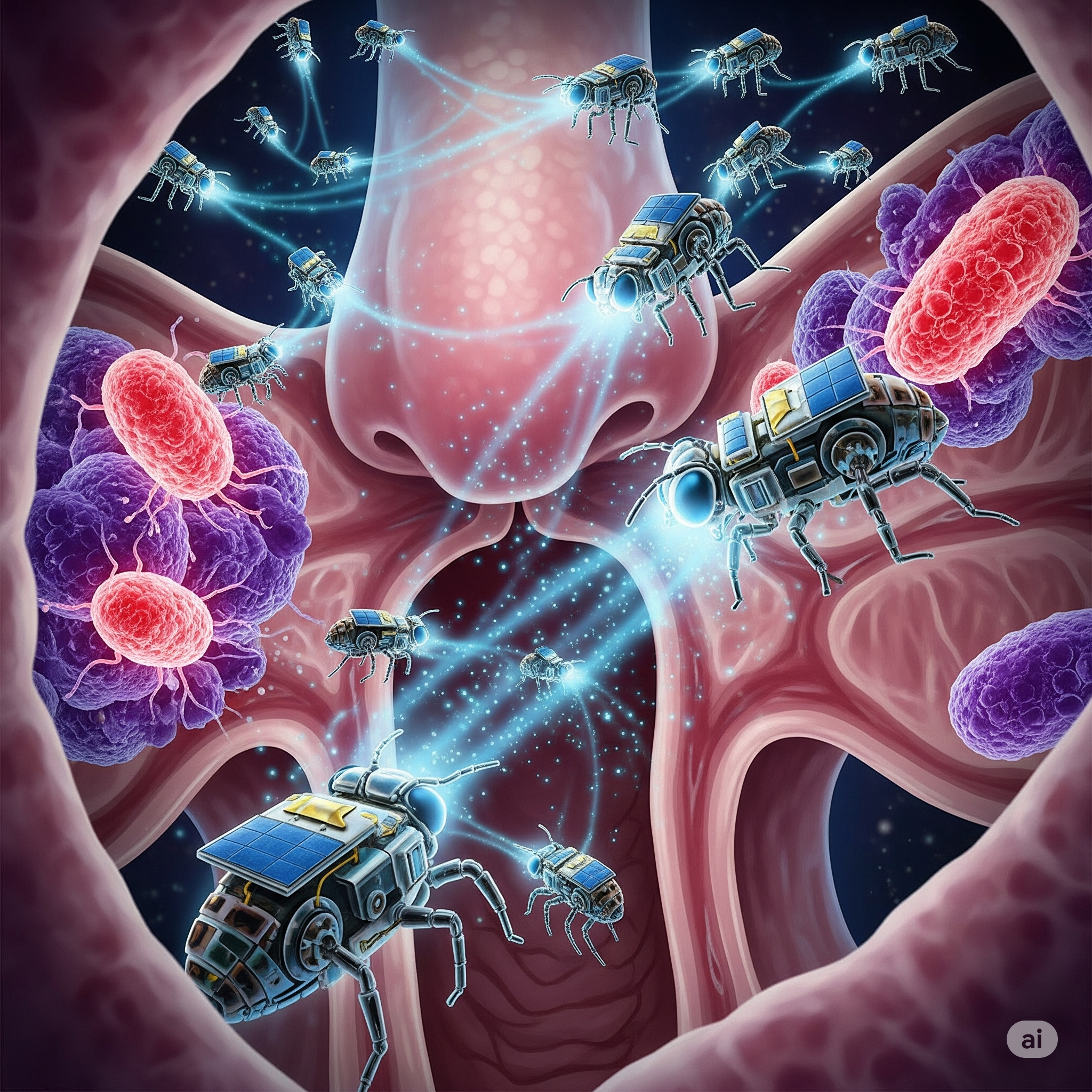Antibiotic resistance is a looming global health crisis, and sinus infections are a prime example of over-reliance on these medications. Traditional treatments often involve multiple rounds of antibiotics, leading to diminished effectiveness and side effects. Now, researchers are exploring a radical alternative: light-powered robot swarms that navigate and neutralize infection directly in the sinus cavity.
In a breakthrough study reported in 2025, scientists developed microbots that can be remotely activated by light to swarm, move, and deliver targeted treatment inside the human body. These bots are so tiny that hundreds of them can fit into a single droplet of fluid.
🤖 How These Micro-Robots Work
1. Swarm Intelligence and Light Guidance
Inspired by ant colonies and fish schools, these robots move collectively as a swarm, responding to light signals to coordinate their movement. Each bot is built with materials that react to external light, enabling propulsion and navigation without wires or motors.
2. Precision Targeting
Once inside the sinus cavity, the robot swarm can be steered using focused light beams. This allows doctors to target specific inflamed or infected tissue, bypassing healthy cells. The bots can carry payloads like antibiotics, enzymes, or even micro-scalpels for surgical precision.
3. Self-Clearing and Biodegradable
After completing their task, these robots either dissolve or are flushed out of the body through natural mucus pathways, ensuring no residual material is left behind.
đź“Š Why Sinus Infections?
Chronic sinusitis affects over 31 million people annually in the U.S. alone, and India faces a growing burden due to rising pollution and urban living. These infections are notoriously hard to treat because:
- Nasal tissues are difficult to reach
- Biofilms protect bacteria from antibiotics
- Repeated infections increase resistance
Using robot swarms offers a localized, non-invasive alternative that can directly reach infection sites and eliminate pathogens without harming healthy cells or requiring high antibiotic doses.
🔍 Current Research and Trials

The concept of medical microbots is not entirely new, but the 2025 trials by a joint team from MIT and the Indian Institute of Science (IISc) have brought it closer to real-world application. In preclinical animal trials:
- Robot swarms cleared 95% of the sinus infection in 3 days
- No requirement of antibiotics
- No damage of surrounding tissues
Further trials in humans are expected in late 2025 or early 2026.
🧵 The Broader Implications
This innovation could change not only how we treat sinus infections but also:
- Combat the global antibiotic resistance crisis
- Reduce dependency on broad-spectrum drugs
- Lower recovery times for ENT infections
In the long term, robot swarms might have applications for:
- Targeted cancer therapy
- Non-invasive surgeries
- Precise drug delivery
🌎 India’s Role in Medical Robotics
India’s growing investment in med-tech and AI research has made it a vital player in developing affordable, scalable healthcare solutions. Collaborations like IISc-MIT highlight India’s role in pioneering medical microbots that are not just cutting-edge, but also cost-efficient for broader access.
âť“ What to Watch Out For
Future risk management involves:
- Ensuring biocompatibility and zero toxicity
- Ethical concerns on micro-robot autonomy
- Preventing misuse or over-commercialization
🌊 Final Thoughts
Swarm robotics powered by light is no longer science fiction. It represents a transformational shift in how we view infection treatment—especially for chronic and resistant cases like sinusitis. With further development and regulation, this tech could offer relief to millions without reaching for another antibiotic pill.
As researchers say: “The future of medicine might just be microscopic.”









+ There are no comments
Add yours